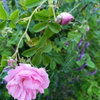Sports...
JessicaBe
11 years ago
Related Stories

FUN HOUZZA Sports Bar in the Family Room
Stadium seating, 4 TVs, a corner booth steps from the beer ... these Cincinnati fans went long on building their dream game-watching room
Full Story
GARDENING AND LANDSCAPINGBe a Good Sport: Build a Backyard Basketball Court
With March Madness in the air, be the coolest parent ever or live out your own hoop dreams with a slammin' basketball court
Full Story
DECORATING GUIDESSet Rooms Racing With Olympic-Style Sports Decor
Bring the rush of the 2012 summer Olympics home by being a proud sponsor of sports equipment and artwork display
Full Story0

DECORATING GUIDESCold-Weather Sports Gear Heats Up Interiors
Skis, snowshoes and other wintertime sports equipment pieces are sliding off the slopes and into the home
Full Story
KIDS’ SPACESRoom of the Day: Sports Theme for a Game Room
An interior designer scores a goal with a winning space for athletic kids
Full Story
BASEMENTSBasement of the Week: For the Love of Sports and Games
Skateboards, an elevated train, a surfboard lighting fixture ... see how one family packed their basement with fun features
Full Story
DECORATING GUIDESDeclutter Now: Lose That Old Sports Equipment
Make more room in your closets and give your home a fresh start the eco-friendly way
Full Story0

SHOP HOUZZShop Houzz: Save on Collegiate and Pro Sports Team Mats
Up to 50% off rugs and mats that put your favorite team on display
Full Story0

HOLIDAYSFather's Day Extravaganza! 19 Glorious Man Spaces by Houzzers
Guitars, beer, games and sports memorabilia fill these unabashedly masculine rooms for men of all ages and tastes
Full Story
DECORATING GUIDESBaseball Decor Steps Up to the Plate
Now batting: baseball-theme murals, a rug that mimics turf and a busload of sports memorabilia, just in time for opening day
Full Story










roseseek
User
Related Professionals
Holly Springs Landscape Architects & Landscape Designers · Otsego Landscape Architects & Landscape Designers · Beachwood Landscape Contractors · Cedar Hill Landscape Contractors · College Park Landscape Contractors · Cudahy Landscape Contractors · Eureka Landscape Contractors · Fort Atkinson Landscape Contractors · Laguna Hills Landscape Contractors · Medford Landscape Contractors · Milford Mill Landscape Contractors · Paramount Landscape Contractors · Merrifield Landscape Contractors · La Verne Swimming Pool Builders · Newman Swimming Pool Buildersjerijen
roseseek
JessicaBeOriginal Author
roseseek
JessicaBeOriginal Author
roseseek
judderwocky
JessicaBeOriginal Author
roseseek
roseseek
mmmgonzo